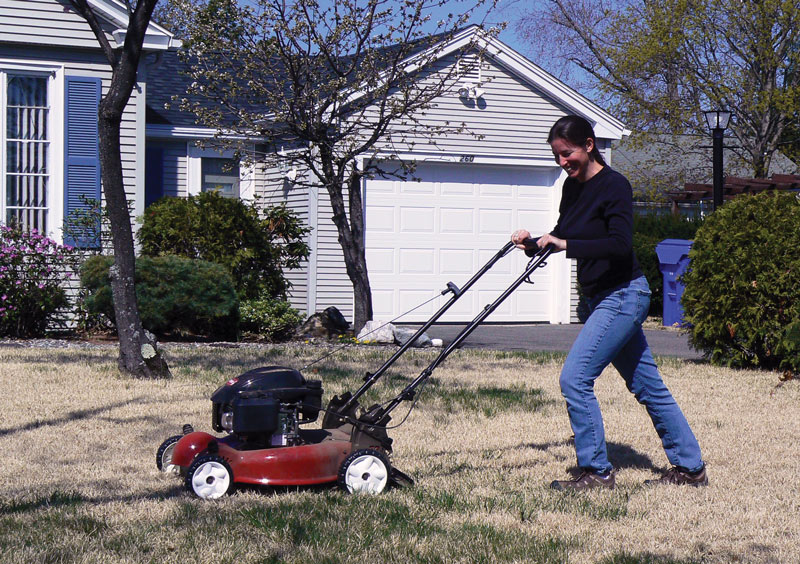
Photo courtesy of Susannah Lerman/University of Massachusetts Amherst
Significant losses of bee populations have led scientists to look for ways to increase pollinator habitat. In a study of 16 home lawns in suburban western Massachusetts, researchers tested how lawn mowing frequency could affect bee abundance and diversity.
Frequent lawn mowing removes flowers from weeds such as dandelions and clover that could otherwise provide pollen and nectar sources for bees.
Lawns in the study were not treated with herbicides and were mowed weekly, once every two weeks or once every three weeks. Lawns mowed once every three weeks had 2.5 times as many flowers and a greater diversity of bee species than lawns mowed at the other frequencies. However, lawns mowed once every two weeks had a greater abundance of bees.
The authors say that the presence of more lawn flowers that were more accessible (because of shorter grass) drastically improved bee habitat in lawns mowed every two weeks. Less frequent mowing could allow homeowners to provide bee habitat without removing their lawns or establishing pollinator gardens.
Over the course of the study, researchers observed 4,587 bees from 93 bee species. Additional observations increased the total to 111 bee species — approximately 25% of the bee species in Massachusetts. To determine whether these results are valid for other parts of the country, this research will need to be repeated in more U.S. cities.
— S.B. Lerman, Ph.D., University of Massachusetts, Amherst, Mass.; A.R. Contosta, Ph.D., University of New Hampshire, Durham, N.H.; J. Milam, University of Massachusetts, Amherst, Mass.; and C. Bang, Ph.D., Arizona State University, Tempe, Ariz.
This research was published in Biological Conservation.
Teresa Carson is GCM’s science editor.